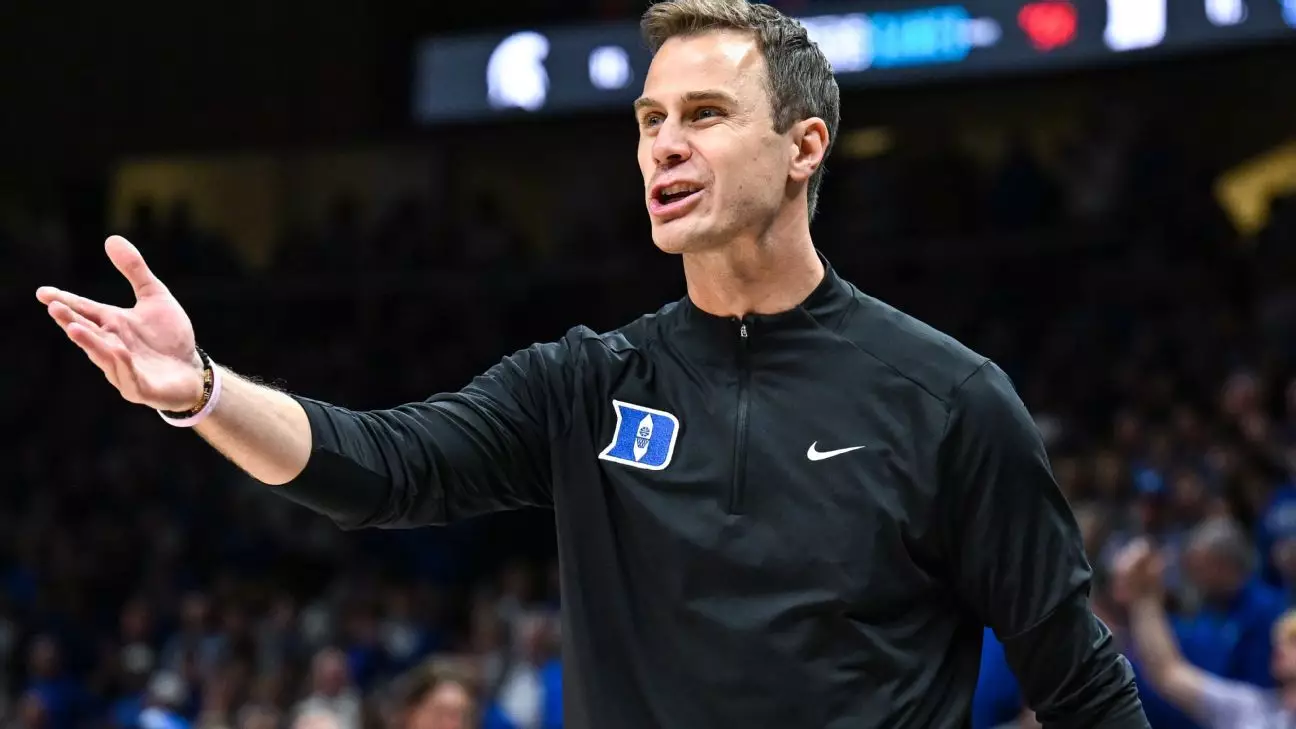In the fast-paced world of college basketball, injuries are not uncommon. However, when these injuries stem from reoccurring issues like cramping, it raises alarms for teams, coaches, and fans alike. This has been a pressing concern for Duke Blue Devils head coach Jon Scheyer, who has been monitoring the health of his team closely. Recent games have highlighted the impact of physical strain on players, notably freshmen who are still adjusting to the rigorous demands of collegiate athletics.
Duke’s recent matchup against Kentucky ended in a disappointing 77-72 loss, but the aftermath brought more worry than just the final score. Star freshman Khaman Maluach struggled with significant cramping issues that limited his playtime in the second half. After a hard-fought battle, Maluach’s performance was hampered by physical struggles that have become alarmingly frequent among the team’s young athletes.
In a similar vein, reserve guard Sion James also succumbed to an injury during the Kentucky game. After suffering a hard fall while attempting to navigate through a screen, James exited the game, holding his shoulder in evident pain. The uncertainty surrounding his status only added to the anxiety in the Blue Devils’ locker room. Scheyer’s reticence to provide an update highlighted the concern that injuries could further plague a team already grappling with difficulties on both ends of the court.
“What’s concerning,” Scheyer explained post-game, “is the pattern we’re seeing.” These young athletes, still in the early stages of their basketball careers, may not yet be acclimatized to the intensity of NCAA competition. Maluach’s discomfort began dramatically in the second half, immediately after his leg became pinned under an opposing player. His visible struggle to return to form not only demonstrated physical toll but also revealed mental aspects where young players grapple with internalizing pain while striving to perform.
Moreover, Maluach, standing at a towering 7-foot-2, possesses enviable talent that is projected to place him within the NBA lottery picks. Despite his prowess—clocking in with 10 points, 7 rebounds, and 2 blocks—his potential was undeniably hindered by physical limitations. Scheyer noted that this was not an isolated incident; he recalled similar occurrences earlier in the season, specifically referencing star freshman Cooper Flagg, whose own cramping issues in a previous game against Army further suggested this was a developing trend.
Scheyer’s remarks indicate a clear commitment to addressing these concerns. “We can’t have that,” he declared firmly, emphasizing the team’s need to prioritize the health and well-being of its players. He expressed determination to meet with the training staff tirelessly until they devise a solution. This urgency underscores a critical element in sports medicine: ensuring athletes maintain optimal hydration, nutrition, and conditioning, especially at such a competitive level.
The relationship between training regimens and wellness is vital. While coaches may push players to maintain peak physical performance, it’s equally essential to recognize the warning signs. Signs of fatigue and cramping can often indicate deeper issues, such as a lack of preparation or insufficient recovery time. As Scheyer noted, it’s not merely about addressing symptoms but rather preventing them.
The situation Duke faces undoubtedly calls for introspection. As their season progresses, the need for a robust support system for player health becomes paramount. The Blue Devils are equipped with talented individuals, but it is equitable support from both coaching and training staff that will truly elevate their performance. Scheyer’s proactive stance suggests an eagerness to tackle these hurdles head-on even if it involves long nights of strategizing.
In the college basketball landscape, the combination of talent and health can dictate the fate of a season. The Blue Devils must turn the anxiety of injuries into an opportunity for growth. By prioritizing their players’ well-being and addressing the root causes of their issues steadily, the team can work towards building a more resilient foundation as they aim for success in the competitive arena of college basketball.


Leave a Reply